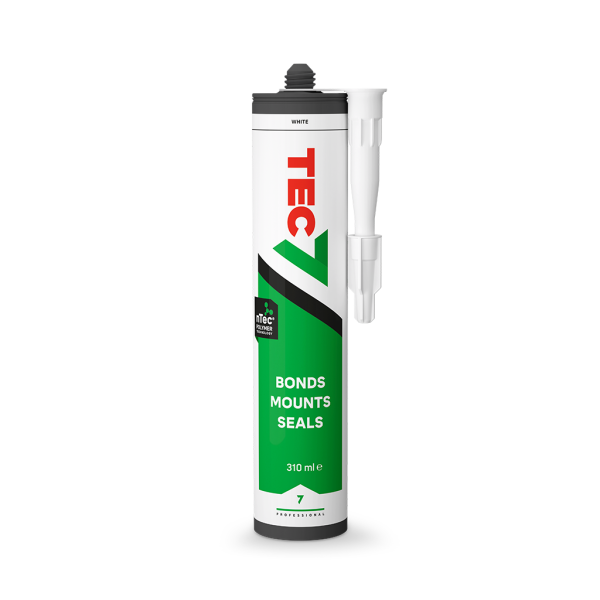
Tec7
SEAL, GLUE AND ASSEMBLE EVERYTHING
Naval applications place high demands on adhesives and sealants. They are constantly getting wet and drying out again. They are also exposed to the sun or freezing temperatures and are subject to widely varying conditions. This makes it difficult when bonding two different materials or when sealing joints that experience high levels of expansion and contraction.
When bonding near and under water, it is important that the adhesive strength is and remains sufficiently high. For almost all adhesives, immersion in water will affect the adhesive strength. This can have various causes:
Swelling of the adhesive due to water absorption
Swelling of the substrate due to water absorption
Substrate failure due to moisture absorption
Weakening of physical adhesive bonds due to the effects of water
Leaching of components from the adhesive or surface
Oxidation or deterioration of the substrate
Crystallisation of salts on the contact surface
Contamination of the water
In our white paper ‘Tec7: Tested and approved for marine applications’, we take a closer look at the topic of ‘bonding in and around water’ and share the results of our tests at Metalogic.
Any sealant of a reasonable quality will survive for a long time in dry, dark conditions. Full sun exposure presents a challenge because UV radiation damages the polymers, which requires attention during the formulation and use of expensive UV blockers. Full sun exposure combined with fresh water is even more difficult because water enables all kinds of chemical reactions that can damage the surface of the sealant. Full sun exposure with salt water is extremely demanding for any sealant.
When bonding under water, on the other hand, it is not only necessary to consider the protective factor, but also how strongly the adhesive strength is affected by the various influences described above. It goes without saying that the greater the exposure of the contact surface, the greater the expected influence will be.
This was investigated by submerging a series of test pieces for long periods of time (7 to 125 days!) and measuring the adhesive strength in a tensile testing machine.
The tests show that Tec7 is not affected by water. It protects underlying materials and retains good adhesive strength, especially on less porous materials. If the adhesive is allowed to dry, we even see a recovery of strength. In the case of long-term or permanent submersion, a safety margin must be taken into account to counteract the decline in adhesive strength.
More in-depth information about the test results can be found in our white paper.
Tec7 is used as a safe, high-quality adhesive on drilling platforms, wind farms and luxury yachts, among other naval applications. In addition to Tec7's extensive environmental and VOC emission certifications, this is further confirmation of the company's product quality and concern for the environment and health.

SEAL, GLUE AND ASSEMBLE EVERYTHING